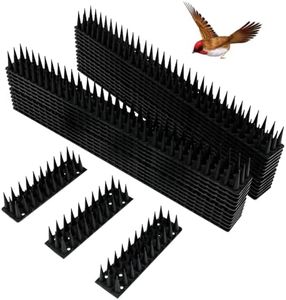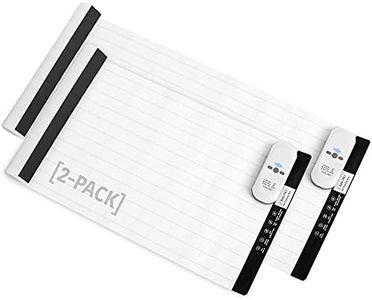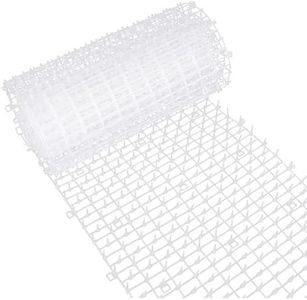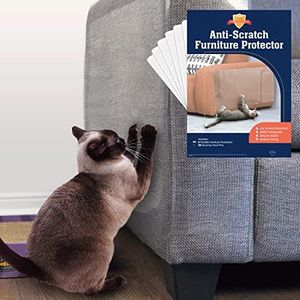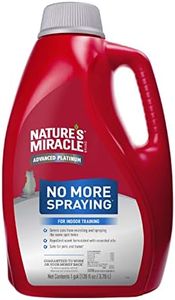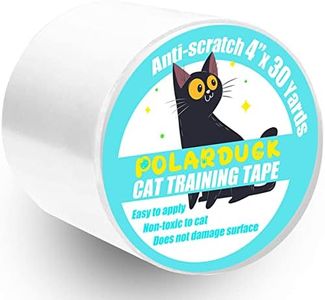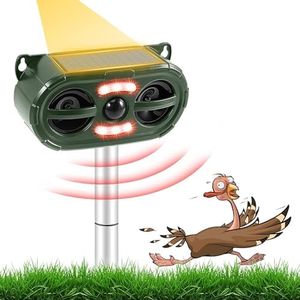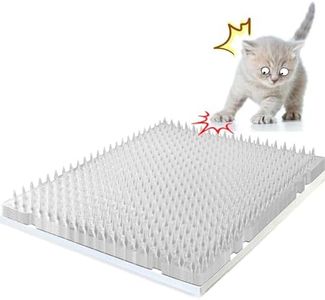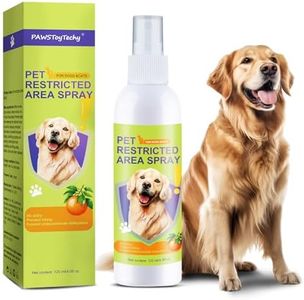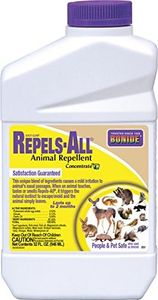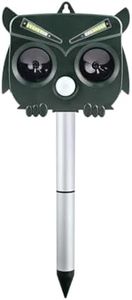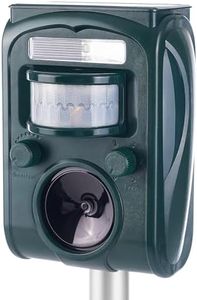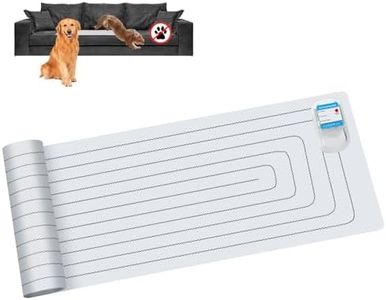We Use CookiesWe use cookies to enhance the security, performance,
functionality and for analytical and promotional activities. By continuing to browse this site you
are agreeing to our privacy policy
10 Best Cat Repellents
From leading brands and best sellers available on the web.Buying Guide for the Best Cat Repellents
Choosing a cat repellent can feel overwhelming because there are so many options and types available. The most important thing is to clearly define where and how you want to use the repellent—whether it’s meant for indoors or outdoors, and whether you want to deter neighborhood cats or keep your own pets away from certain areas. It’s also important to understand how each type works and how it fits your living environment and values (for example, if you prefer chemical-free solutions or pet-safe options). By understanding the key features and specifications, you’ll be able to select an effective and appropriate repellent for your situation.Type of RepellentCat repellents come in several types, including sprays, granules, ultrasonic devices, and motion-activated sprinklers. Sprays and granules usually rely on odors or tastes that cats dislike, while ultrasonic devices emit a high-frequency sound that bothers cats but is often inaudible to humans. Motion-activated sprinklers use water bursts to startle cats. The choice of type is crucial because certain settings—like gardens or large yards—may benefit from devices, while small indoor areas might be better suited to sprays or granules. If you have children or other pets, you might lean toward non-chemical or non-contact options. Assess your space and who shares it to guide your decision.
Range and Coverage AreaThe range specifies how much area the product covers effectively, which can span from only a few square feet (as with some sprays) up to large sections of a garden (as with some devices or granules). If you’re protecting a small planter or a single entryway, a product with a smaller coverage area is sufficient and more targeted. For larger yards or multiple areas, opt for products with a broad range; you might need more than one device or product for full coverage. Always match the size of your problem area to the coverage capability of the repellent.
Safety for Pets and HumansSafety is a critical specification—it means the product should not harm cats, people, or other animals. Many repellents are labeled as non-toxic or pet-friendly. Some chemical-based options may irritate or be unsafe if ingested or touched, so consider who will have access to the areas treated. If you have small children, dogs, or other sensitive pets, prioritize options that are certified as safe or use water or sound rather than chemicals.
Weather ResistanceWeather resistance refers to how well an outdoor cat repellent stands up to rain, wind, sun, and temperature changes. Some products can wash away or degrade in wet conditions, meaning you’ll have to reapply them often, while others—like certain devices—are built to withstand weather. For permanent or consistent outdoor use, look for repellents that specifically mention weatherproof or waterproof qualities. If you only need indoor control or temporary outdoor use, this spec may be less important.
Longevity and Frequency of ApplicationHow long a repellent lasts before it needs to be reapplied or replaced impacts convenience and cost over time. Some sprays may require daily use or after each rainfall, while ultrasonic devices can run for months before needing maintenance or new batteries. Longer-lasting formulas or devices are ideal for busy households or hard-to-reach areas, but if you only have an occasional problem or are testing a solution, something shorter-term might be enough.
Smell and NoticeabilitySome repellents have strong scents that are unpleasant not only to cats but also to people. Others are odorless or use very mild fragrances. If you’re using a repellent indoors or near places where you spend time, consider one with a minimal or neutral smell. For outdoor use, smell is less of an issue unless it’s near doors, windows, or outdoor seating.
